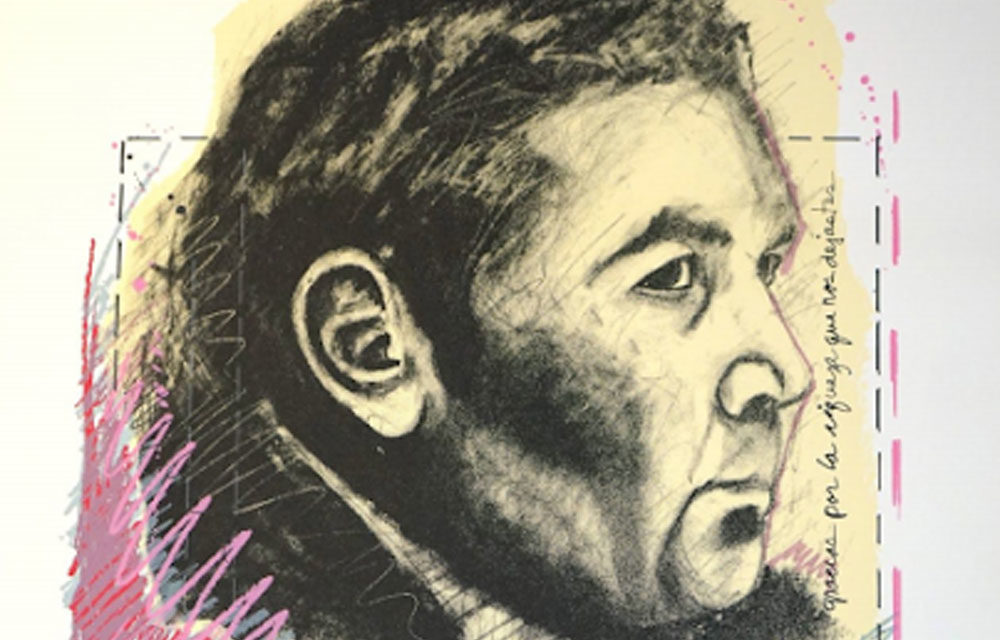There is exciting news on the Chicano art front. The Smithsonian American Art Museum in Washington, DC, in association with Princeton University Press, has just mailed out its fabulous 340 page book, !Printing The Revolution: The Rise and Impact of Chicano Graphics, 1965 to Now. I received my copy just in time for the virtual tour that the Smithsonian will have at the end of this week [Nov.19, 2020].
The Smithsonian American Art Museum has been collecting Chicano art for nearly a quarter century and the virtual exhibition includes many of the Chicano artists that Harriett and I have collected over the past 50 years. Yes, it has been that long since my wife and I first fell in love with art made by Chicano artists. We collected works by over 300 Chicano artists, so we know a thing or two about this field.
When the Chicano art movement began in the late 1960s, Malaquias Montoya from the San Francisco Bay area, was at the forefront. The Smithsonian’s Chicano
Graphics exhibition featured several of his early works, including his poster Yo Soy Chicano for KCET TV in Los Angeles, for a documentary produced by Jesus Trevino, one of the nation’s earliest and most talented Chicano filmmakers and producers.
Montoya, one of the most recognized and
accomplished Chicano artists of his generation, served in the U.S.Marines in the mid 1960s and used his G.I. Benefits to enroll at UC Berkeley. Between the years 1968 to 1970, UC Berkeley and most California campuses were engaged in anti-war protests as well as struggles over the lack of inclusion of students of color. During his college days at UC Berkeley, Montoya emerged as an important figure in the development of Chicano poster art.
Montoya had previously worked in the print industry in San Jose, California. In San Jose he learned silk screen techniques that he introduced to UC Berkeley art department students. The late 1960s were a time of much social unrest in America.
Montoya and fellow activists utilized posters to educate, inform, and motivate the public. A major social justice cause for many urban students was the plight of farm workers. Student activists rallied behind Cesar
Chavez and his fledgling UFW union. Montoya contributed to the UFW movement by producing a vast number of posters in support of higher wages, better working conditions, and union recognition.
To address social justice and workers’ rights, Montoya worked as a volunteer producing posters for free. Montoya had migrated as a child with his family to harvest the crops of California’s Central Valley. Montoya also joined other artists in muralism. Some of the first Chicano murals in the United States had their origin in the San Francisco Bay Area. Montoya excelled in the arts and eventually spent most of his career teaching printmaking at UC Davis.
Montoya recently retired from the Chicana and Chicano Studies Department at UC Davis where he taught for many years. His department wrote: “A man of great political and artistic principles, he believes that art should be directed to the broadest possible audiences, including those who do not frequent commercial galleries. Montoya has elected to make the world his art gallery.”
Today, Montoya lives in a small farming community in northern California and remains very active in the arts. His UC Davis colleagues commented that there is “no
ambiguity in Montoya’s works, as the art form is used to convey the artist’s political message” as well as his commitment to better education, economic stability, and safety and health for all. In his artist statement Montoya explained his artistic philosophy, “As a Chicano artist I feel a responsibility that all my art should be a reflection of my political beliefs—an art of protest.” He is well-known for his exhibits protesting the death penalty, posters proclaiming the importance of education, prints demanding the mobilization of farmworkers, and community advocacy for disenfranchised groups.
(The cover art features a Montoya painting for the cover of Latino High School Graduation: Defying theOdds by Harriet D. Romo and Toni Falbo. Collection of Harriett and Ricardo Romo)
Chicano Art: Presente! !Printing The Revolution: The Rise and Impact of Chicano Graphics, 1965 to Now Smithsonian American Art Museum







